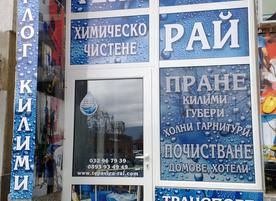Пералня и Химическо чистене Пеликан - Пране на килими-2.49лв/кг, пердета-8лв/кг, матраци,одеала,губери- 5.80лв/кг , спално бельо - 3.20лв/кг, покривки-4лв/кг, дрехи - 2.68лв/кг

Пране на килими; Пране килими Варна; Пране килими Варна цена; Пералня Варна; Почистване килими Варна; Миене килими Варна; Машинно пране Варна; Фабрика за пране на килими; Хотелско пране Варна, Химическо чистене Варна;
Пералня и Химическо чистене Пеликан - Пране на килими-2.49лв/кг, пердета-8лв/кг, матраци,одеала,губери- 5.80лв/кг , спално бельо - 3.20лв/кг, покривки-4лв/кг, дрехи - 2.68лв/кг


















